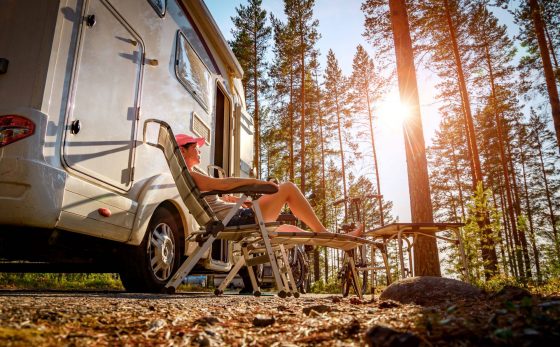Be prepared if you’re planning a trip on B.C.’s resource roads, many of which were damaged and closed after floods in November 2021.

Photo credit: istock.com/cookelma
In recent years, more and more of us are using resource roads to get to campsites, fishing spots, and other backcountry locations.
Dozens of these roads throughout the province have been shut down since major damage occurred during the “atmospheric river” storm in mid-November. As government and industry work to assess and repair these roads, they are reaching out to warn the public about safety concerns.
Prepare for damaged roads
“People should be driving slower in the coming year just to be prepared for the inevitable, more serious washboards, deeper potholes, and just being able to stop,” says Jordan Tesluk, a forestry safety advocate with the BC SAFE Forestry Program, quoted in this CBC news story.
I contacted Jordan to ask if he has any more advice. He shared recommendations that apply to all major corridors where repair work is ongoing.
“People should give themselves a few extra hours for all trips through those routes,” Jordan says. “Falling behind and having to rush can result in accidents.”
Bring emergency supplies and share your trip plan
Jordan also suggests keeping extra food, water, and first aid supplies in your vehicle. Consider having a day’s worth of emergency food and water for each 10 km of road you travel off the pavement.
As well, if you are in the backcountry a lot, consider investing in alternative signaling devices. Jordan says satellite devices and subscriptions are more affordable and user-friendly than before. They can start at a few hundred dollars for a device and $15–25 a month for subscriptions. Satellite devices provide the ability to call out from any location in the province and secure mechanical assistance or emergency medical aid — but even so you should never leave home without letting someone know where you are going.
Various trip-planning apps are one way to share your plans with others. Many are available for free, like the AdventureSmart Trip Plan App, which can also be accessed from any web browser.
Resource road basics
Resource roads are often narrow and winding, with limited visibility. A loaded logging truck can weigh 10 times more than a regular passenger vehicle, has limited maneuvrability, and can take up to 90 metres to come to a complete stop. For more on driving safely on resource roads, see my post Know the rules before driving on resource roads. It includes a video from the BC Forest Safety Council (BCFSC) that covers road rules such as “down traffic has the right of way.”
For more information, see Resource road safety information, from the Government of British Columbia.
With the right safety planning, we can get out in the great outdoors and have an amazing time. If you have road trip safety advice to share, please let me know in the comments below.


